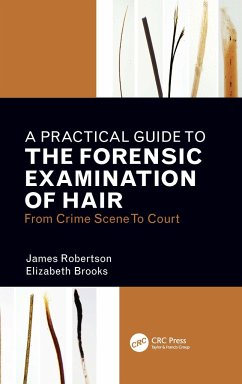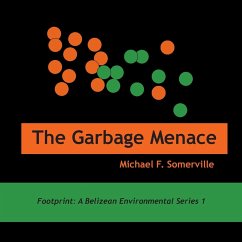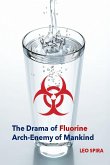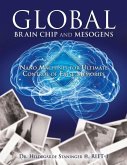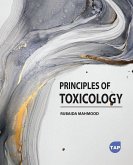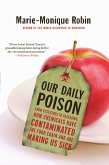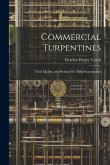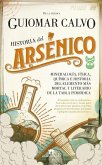James R Robertson, Elizabeth Brooks
A Practical Guide to the Forensic Examination of Hair
From Crime Scene to Court
James R Robertson, Elizabeth Brooks
A Practical Guide to the Forensic Examination of Hair
From Crime Scene to Court
- Broschiertes Buch
- Merkliste
- Auf die Merkliste
- Bewerten Bewerten
- Teilen
- Produkt teilen
- Produkterinnerung
- Produkterinnerung
The book presents current best practices and methodologies-for forensic microscopists, and trace evidence analysts, in addition to lawyers and judges-in understanding the utilization of hair evidence in court cases. A must-have professional resource for forensic and legal professionals in the handling and analysis of all hair evidence.
Andere Kunden interessierten sich auch für
![The Garbage Menace The Garbage Menace]() Michael F. SomervilleThe Garbage Menace12,99 €
Michael F. SomervilleThe Garbage Menace12,99 €![The Drama of Fluorine by Leo Spira MD, PHD The Drama of Fluorine by Leo Spira MD, PHD]() MD Leo SpiraThe Drama of Fluorine by Leo Spira MD, PHD17,99 €
MD Leo SpiraThe Drama of Fluorine by Leo Spira MD, PHD17,99 €![Global Brain Chip and Mesogens Global Brain Chip and Mesogens]() Hildegarde Staninger Riet-1 (R)Global Brain Chip and Mesogens23,99 €
Hildegarde Staninger Riet-1 (R)Global Brain Chip and Mesogens23,99 €![Principles of Toxicology Principles of Toxicology]() Rubaida MahmoodPrinciples of Toxicology80,99 €
Rubaida MahmoodPrinciples of Toxicology80,99 €![Our Daily Poison Our Daily Poison]() Marie-Monique RobinOur Daily Poison19,99 €
Marie-Monique RobinOur Daily Poison19,99 €![Commercial Turpentines: Their Quality and Methods for Their Examination Commercial Turpentines: Their Quality and Methods for Their Examination]() Fletcher Pearre VeitchCommercial Turpentines: Their Quality and Methods for Their Examination15,99 €
Fletcher Pearre VeitchCommercial Turpentines: Their Quality and Methods for Their Examination15,99 €![Historia del Arsenico Historia del Arsenico]() Guiomar Calvo SevillanoHistoria del Arsenico19,99 €
Guiomar Calvo SevillanoHistoria del Arsenico19,99 €-
-
-
The book presents current best practices and methodologies-for forensic microscopists, and trace evidence analysts, in addition to lawyers and judges-in understanding the utilization of hair evidence in court cases. A must-have professional resource for forensic and legal professionals in the handling and analysis of all hair evidence.
Produktdetails
- Produktdetails
- Verlag: Taylor & Francis
- Seitenzahl: 238
- Erscheinungstermin: 22. Oktober 2021
- Englisch
- Abmessung: 234mm x 156mm x 18mm
- Gewicht: 481g
- ISBN-13: 9781032108612
- ISBN-10: 1032108614
- Artikelnr.: 62268958
- Herstellerkennzeichnung
- Libri GmbH
- Europaallee 1
- 36244 Bad Hersfeld
- gpsr@libri.de
- Verlag: Taylor & Francis
- Seitenzahl: 238
- Erscheinungstermin: 22. Oktober 2021
- Englisch
- Abmessung: 234mm x 156mm x 18mm
- Gewicht: 481g
- ISBN-13: 9781032108612
- ISBN-10: 1032108614
- Artikelnr.: 62268958
- Herstellerkennzeichnung
- Libri GmbH
- Europaallee 1
- 36244 Bad Hersfeld
- gpsr@libri.de
James Robertson graduated from the University of Glasgow in 1972 with a BSc(hons) in Agricultural Botany and in 1976 with a PhD in plant physiology. Following a short period as a postdoctoral researcher in London he entered the world of forensic science as a lecturer at the University of Strathclyde where he taught in the Master of Forensic Science from 1976 to 1985. James worked on a Royal Commission in South Australia in 1983 and in 1985 migrated to Australia in 1985 to work as a senior forensic scientist in Adelaide before joining the Australian Federal Police (AFP) in 1989 as the first Director of forensic science. During the next 20 years, he established the AFP forensic group as a world respected forensic organization. Despite occupying a senior managerial role, James always maintained his case work competency as a fiber and hair examiner-and his interest in all things academic! Hence it was no surprisem on his retirement from the AFP, that he returned to an academic role as a Professorial Fellow at the University of Canberra (UC) and Director of the National Centre for Forensic Studies (NCFS). James 'retired '(again) in 2019 but remains as a Professor Emeritus at UC. James has authored co-authored close to 200 academic papers and edited or co-edited several books on forensic science including books on fibres and hairs. He is Editor Emeritus of the Australian Journal of Forensic Sciences and a Life Member of the Australian Academy of Forensic Sciences (AAFS) and the Australian and New Zealand Forensic Science Society (ANZFSS) having served both organisations as either President or Vice President. James has chaired all of the major forensic advisory groups in Australia during his career. His contributions to forensic science have been formally recognised with the Public Service Medal (PSM), a Member of the Order of Australia (AM) and Doctor of the University of Canberra. James is a Fellow of the Royal Society of New South Wales (FRSN). James continues his active interest in, and passion for, the forensic aspects of trace evidence, criminalistics and especially fibres and hairs. Elizabeth Brooks graduated with a BA in Biogeography from Australian National University, Australia in 1978, and a Master of Applied Science from the University of Canberra, Australia in 2007. Prior to working at the Australian Federal Police (AFP) in October 2000, Elizabeth worked for twenty-two years at the Commonwealth Scientific and Industrial Organization, Division of Entomology providing microscopy and immunohistochemistry expertise for their Biotechnology Program. At the AFP, as part of the biological criminalistics team undertaking DNA analysis Elizabeth's interests focused largely on forensic hair examination. Over the years, she has authored several scientific journal articles and book chapters. In retirement, Elizabeth maintains her interest and expertise in hair examination, providing hair training courses and technically reviewing cases for Australian jurisdictions, as requested.
1. Historical Context to Contemporary Practice in Hair Examinations
2. Fundamentals of the Biology and Chemistry of Hairs
3. Recognition, Recording and Recovery Considerations
4. Laboratory Examinations
5. Evaluation and Interpretation
6. Reporting
7. Training Considerations
8. Acquired Characteristics Adine Boehme (Guest author)
References
Glossary
2. Fundamentals of the Biology and Chemistry of Hairs
3. Recognition, Recording and Recovery Considerations
4. Laboratory Examinations
5. Evaluation and Interpretation
6. Reporting
7. Training Considerations
8. Acquired Characteristics Adine Boehme (Guest author)
References
Glossary
1. Historical Context to Contemporary Practice in Hair Examinations
2. Fundamentals of the Biology and Chemistry of Hairs
3. Recognition, Recording and Recovery Considerations
4. Laboratory Examinations
5. Evaluation and Interpretation
6. Reporting
7. Training Considerations
8. Acquired Characteristics Adine Boehme (Guest author)
References
Glossary
2. Fundamentals of the Biology and Chemistry of Hairs
3. Recognition, Recording and Recovery Considerations
4. Laboratory Examinations
5. Evaluation and Interpretation
6. Reporting
7. Training Considerations
8. Acquired Characteristics Adine Boehme (Guest author)
References
Glossary

